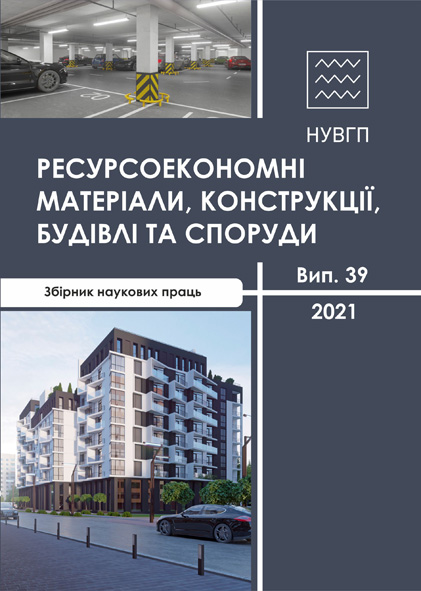STRESSED STATE OF GLUED WOODEN BEAMS WITH COMBINED REINFORCEMENT
DOI:
https://doi.org/10.31713/budres.v0i39.06Abstract
In recent years laminated wooden structures have become an integral part of construction all around the world. They have a number of advantages over structures of similar size, made of metal or reinforced concrete, namely: lower weight, better resistance to chemically aggressive environments, high fire resistance and aesthetic appeal. In order to improve the behavior of wooden elements, to increase their load-bearing capacity and rigidity, various methods of reinforcing glued wooden structures have been proposed and studied. It allowed to reduce the overall dimensions of the cross section of the elements and to increase the spans. We proposed a new design of combined reinforcement of glued wooden beams, in which steel rods of periodic profile were arranged in the grooves of the compressed zone, and the stretched zone was reinforced with external composite strip reinforcement made of carbon fiber tape Sika CarboDur S-512. Thus, the stiffness and load-bearing capacity of our beams under bending conditions were increased. The purpose of this work was to investigate the stress state of reinforced beams during loading and to compare the obtained results with the test results of non-reinforced beams of similar dimensions. Two series of glued beams with cross-sectional dimensions of 100x150 mm and 3000 mm long were prepared for testing. The first series included two glued non-reinforced beams. They were tested to determine the destructive load and set control stresses to compare them with the corresponding values for reinforced beams. The second series included two glued reinforced beams. They were reinforced with 12 mm diameter steel rod reinforcement in the compressed zone and Sika CarboDur S-512 carbon fiber tape reinforcement in the stretched zone. All samples were loaded with a jack by two concentrated forces. Stresses were calculated based on relative strains. Tensometric sensors were glued along the perimeter of the cross section to determine the relative deformations of the beam in the middle of the span. Stress diagrams, which show the difference between the stress states of non-reinforced and reinforced beams are obtained

